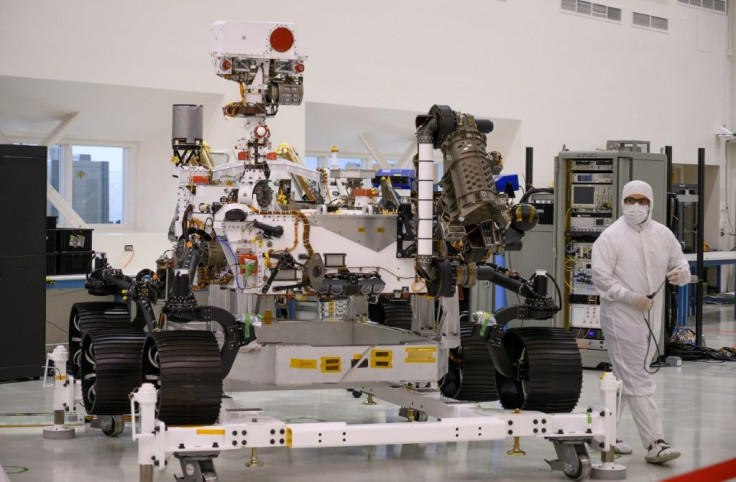NASA Hoping To Uncover Alien Fossils On Mars With New Rover

KEY POINTS
- NASA unveiled its new Mars 2020 rover to media members
- The launch of the new rover's mission will take place in July
- The Mars 2020 rover will look for alien fossils near Jezero crater
NASA has revealed that it intends to use its newest rover to track down alien fossils on Mars. The rover is expected to embark on its mission to the Red Planet sometime in July next year.
Last week, NASA officially unveiled the Mars 2020 rover to members of the media. According to NASA, the objective of the event was to show off the rover before it gets shipped off to the launch facility in Cape Canaveral in February.
“It was a great opportunity for the media not only to see our work close up, but to meet some of the women and men who have dedicated several years of their careers ensuring this next Mars rover lives up to the legacy of those that were built here before it,” David Gruel, the manager for the rover’s assembly, test and launch operations, said in a statement.
Once the rover has been fully assembled, it will be prepared for its mission to Mars, which will take place sometime in July. For the mission, the rover will be deployed near the base of the Jezero Crater where it will explore a region that’s believed to be a dry lake bed.
According to NASA’s scientists, a large body of water as big as Lake Tahoe may have existed in this region. Due to its natural features, the agency believes the area contains well-preserved sediments that are about 3.5 billion years old.
NASA plans to use the rover to collect and study samples from this area. The agency is hoping that these sediments contain fossils or even chemical traces of alien life that once thrived on Mars.
“The trick, though, is that we're looking for trace levels of chemicals from billions of years ago on Mars,” the Mars 2020 deputy project manager Matt Wallace told Reuters.
Aside from the search for alien life, the Mars 2020 rover will also carry out experiments to analyze the Red Planet’s atmospheric conditions. Specifically, the rover will try to determine if it would be possible to make oxygen on Mars using carbon dioxide. If successful, these experiments will serve as a crucial stepping stone for NASA’s planned human missions to the Red Planet.
© Copyright IBTimes 2025. All rights reserved.





















